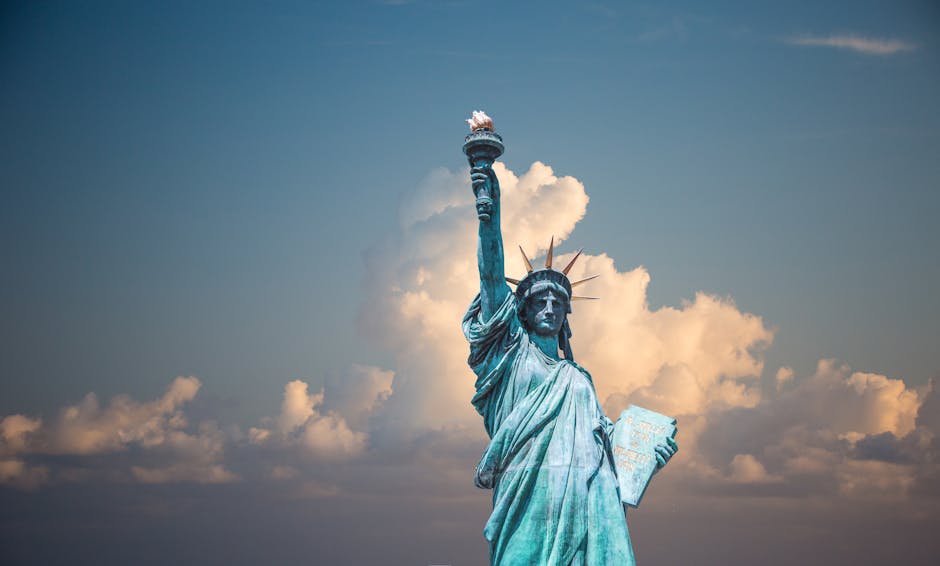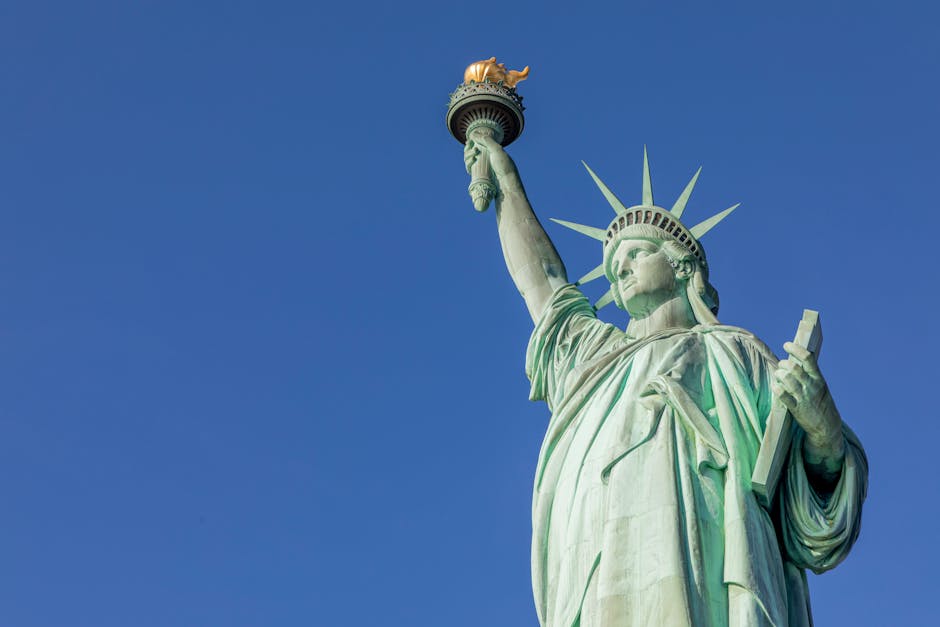The Story Behind New York's Statue of Liberty

The Statue of Liberty is one of the most iconic landmarks in the United States, standing tall in New York Harbor. Its history is deeply intertwined with both American and French heritage, symbolizing freedom and democracy. The statue was a gift from France to the United States, commemorating the alliance between the two nations during the American Revolution. Unveiled in 1886, this colossal statue has since become a universal symbol of freedom and a welcoming sight to immigrants arriving from abroad.
Origins and Design
The idea for the Statue of Liberty was conceived by French political thinker and abolitionist Édouard René de Laboulaye in 1865. He envisioned it as a symbol of liberty and democracy to honor the centennial of American independence. The French sculptor Frédéric Auguste Bartholdi was commissioned to design the statue, which he modeled after Libertas, the Roman goddess of freedom.
Bartholdi's design featured a robed female figure holding a torch above her head in her right hand and carrying a tablet inscribed with the date of the American Declaration of Independence (July 4, 1776) in her left hand. The construction involved several stages, including creating a smaller version before scaling it up to its full size. The internal iron framework was engineered by Gustave Eiffel, who later designed the Eiffel Tower.
The statue was constructed in France and then disassembled for shipment to New York. It arrived in 1885 aboard the French frigate Isère in 350 individual pieces packed into 214 crates. Reassembling it on what was then called Bedloe’s Island took four months.
Symbolism and Meaning
The Statue of Liberty holds profound symbolism. Its torch represents enlightenment, lighting the way to freedom by showing the path to liberty. The seven rays on her crown signify the seven seas and continents, emphasizing global liberty. Additionally, she stands on a broken chain, symbolizing the end of tyranny and oppression.
The pedestal features a plaque with Emma Lazarus's sonnet "The New Colossus," written in 1883 to help raise funds for constructing the pedestal. The poem's famous lines, "Give me your tired, your poor, your huddled masses yearning to breathe free," have come to be associated with the statue’s welcoming stance towards immigrants arriving in America.
- The torch: Enlightenment
- Crown’s seven rays: Seven seas and continents
- Broken chain: End of tyranny
- Emma Lazarus's poem: Welcoming immigrants
Construction Challenges
Constructing the Statue of Liberty posed significant challenges. One major obstacle was financing. Fundraising efforts occurred both in France and America, with various public events and lotteries organized to gather necessary funds. In America, Joseph Pulitzer used his newspaper "The World" to encourage public donations by promising to publish donors' names regardless of contribution size.
Transportation presented another challenge. Shipping over 200 crates across the Atlantic required careful planning and coordination. Once it arrived in New York, constructing a proper foundation and pedestal capable of supporting such a massive structure required precise engineering.
The assembly process itself involved intricate work. Workers had to reassemble hundreds of pieces without modern equipment like cranes or power tools, relying instead on sheer manpower and ingenuity.
Restoration Efforts
Over time, weathering and pollution took their toll on the Statue of Liberty, necessitating several restoration efforts. The most significant restoration project occurred ahead of its centennial celebration in 1986.
This massive undertaking involved replacing parts of the iron framework that had corroded over time with stainless steel supports and installing new copper skin where needed. Additionally, workers cleaned the statue’s exterior to restore its original copper color before oxidation turned it green.
The torch underwent significant changes during this restoration as well. The original torch had been replaced with an electric light in 1916 after being damaged during World War I; however, this newer version also required extensive work to bring it back to its former glory.
Visitor Experience
Visiting the Statue of Liberty offers an insightful experience into its rich history and significance. Tourists can take ferry rides from Battery Park or Liberty State Park to Liberty Island where they can explore various exhibits within the pedestal that detail its construction process and historical context.
| Activity | Description |
|---|---|
| Ferry Ride | A scenic boat trip providing stunning views of New York Harbor. |
| Museum Exhibits | Interactive displays explaining the statue's history and symbolism. |
| Crown Access | A climb up 354 steps for panoramic views from Lady Liberty's crown (reservation required). |
| Pedestal Observation Deck | A vantage point offering close-up views of the statue’s features. |
| Ranger Tours | Guided tours led by park rangers providing detailed insights. |
The National Park Service offers guided tours led by knowledgeable rangers who provide deeper insights into its historical context while sharing lesser-known anecdotes about its creation process or notable visitors over years past.
The story behind New York’s Statue of Liberty is one filled with inspiration from international collaboration combined with innovative engineering techniques that have stood test time since late 19th century until today making lasting impression millions who visit each year.
This monumental structure remains relevant today as powerful emblem values liberty democracy opportunity welcoming spirit embraced not only Americans but worldwide continuing inspire generations and remains a standing testament enduring friendship between France and the United States.
